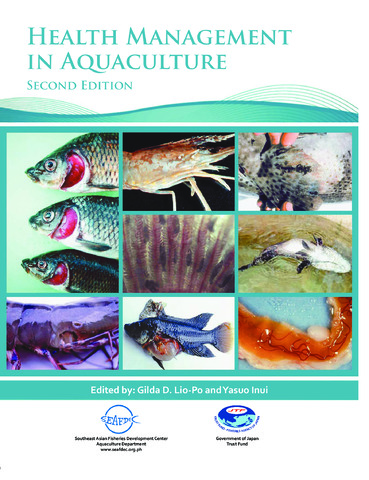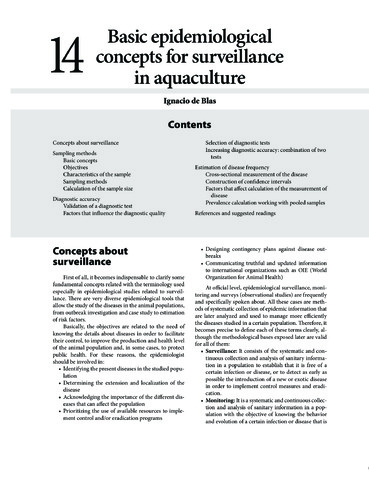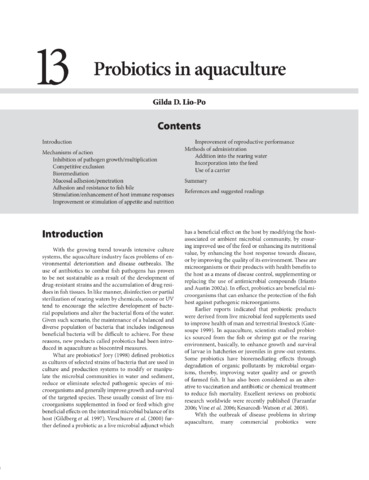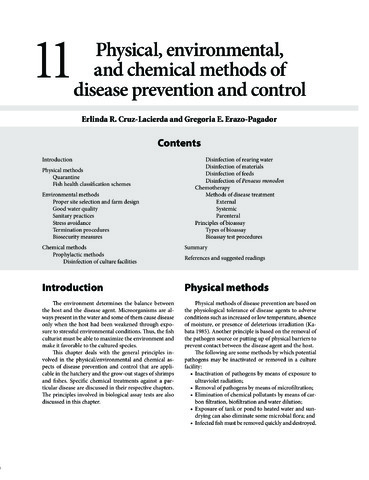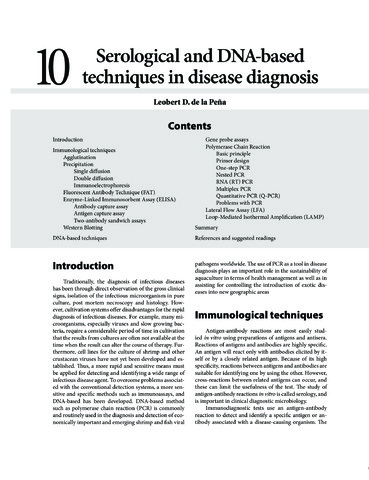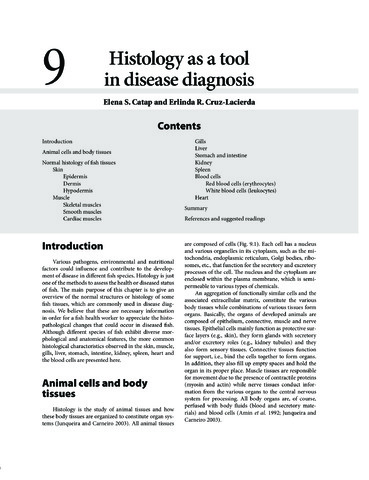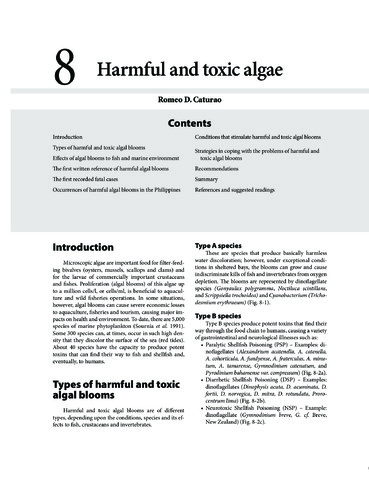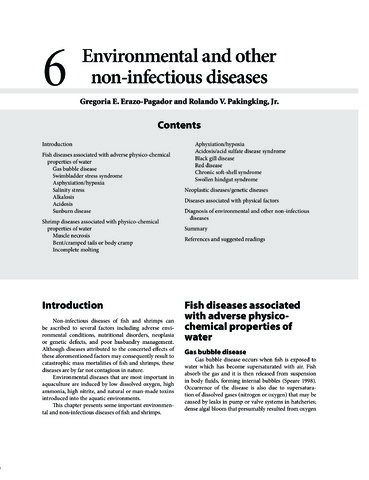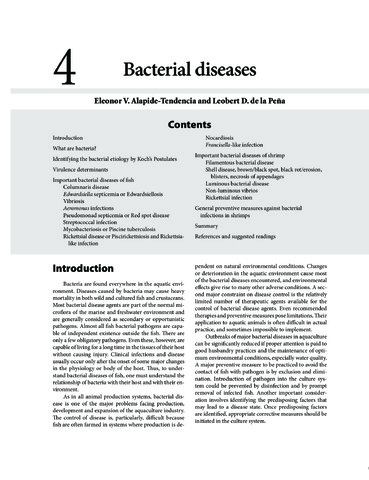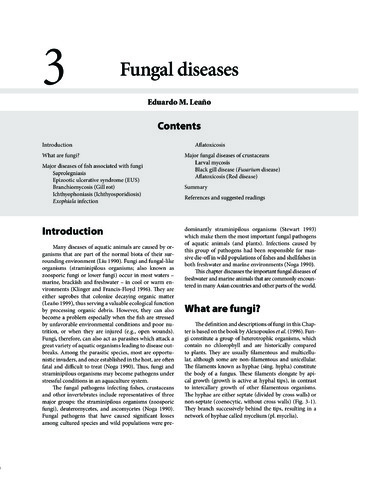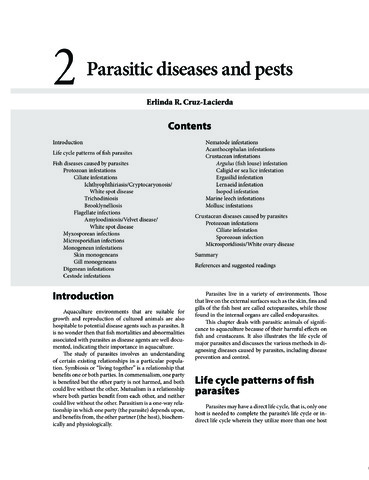Health Management in Aquaculture 2nd Edition
Cari menurut
This second edition consists of fourteen chapters detailing essential information on the basic principles of disease causation, major diseases of cultured fish and crustaceans, particularly shrimps/prawns, harmful algae, methods of prevention and control, molecular/serological/histological diagnostic techniques and epidemiology. Emphasis is still on major diseases that occur in the Philippines and other countries in the Asian region. Each chapter begins with a brief preview of its contents, followed by an in-depth discussion that culminates in a summary. The basic concepts presented were derived from textbooks on microbiology and fish health while the scientific information put forth were drawn from the research and diagnostic findings of the authors, colleagues at SEAFDEC and other institutions in the Philippines and in other countries. The figures and photos included were selected from the authors’ collection of disease cases or shared by colleagues in this field but duly acknowledged directly on the respective figure caption/s. Another modification is the specific reference citation following the corresponding text with its complete bibliography in the references. As in the first edition, the references are supplemented with additional suggested reading materials for the expanded information of interested readers. To make the concepts more understandable, a glossary is included. An index is also incorporated at the end of the book for quick location of desired subtopics. It is hoped that this second edition will be more responsive to the needs of students, aquaculturists and scientists in preventing fish/shellfish diseases and in dealing with outbreaks effectively.
Contents
- Foreword
- Messages
- Preface
- About the Editors
- Contributors
-
Chapter 1
Disease development
Celia R. Lavilla-Pitogo- Introduction
- Definition and impact of disease
- How disease develops
- Hosts
- Pathogens
- Environment
- Human factor in disease development
- Stress in disease development
- Disease diagnosis
- Signs of diseases
- Diagnosis
- Levels of diagnosis
- Surveillance and monitoring
- Emerging issues related to fish health
- Environment and food safety issues in aquaculture
- Transboundary diseases
- Biosecurity
- References and suggested readings
-
Chapter 2
Parasitic diseases and pests
Erlinda R. Cruz-Lacierda- Introduction
- Life cycle patterns of fish parasites
- Fish diseases caused by parasites
- Crustacean diseases caused by parasites
- Summary
- References and suggested readings
-
Chapter 3
Fungal diseases
Eduardo M. Leaño- Introduction
- What are fungi?
- Major diseases of fish associated with fungi
- Major fungal diseases of crustaceans
- Summary
- References and suggested readings
-
Chapter 4
Bacterial diseases
Eleonor V. Alapide-Tendencia and Leobert D. de la Peña- Introduction
- What are bacteria?
- Identifying the bacterial etiology by Koch’s Postulates
- Virulence determinants
- Important bacterial diseases of fish
- Important bacterial diseases of shrimp
- General preventive measures against bacterial infections in shrimps
- Summary
- References and suggested readings
-
Chapter 5
Viral diseases
Gilda D. Lio-Po- Introduction
- Basic structure of a virus
- Taxonomy
- Replication and virulence
- Specificity of viruses
- Modes of transmission
- Virus carriers
- Diagnosis
- Major viral infections of finfishes
- Major viral infections of penaeid shrimps
- Major viral infections of freshwater prawns
- Prevention of viral infections
- Summary
- References and suggested readings
-
Chapter 6
Environmental and other non-infectious diseases
Gregoria E. Erazo-Pagador and Rolando V. Pakingking Jr.- Introduction
- Fish diseases associated with adverse physico-chemical properties of water
- Shrimp diseases associated with physico-chemical properties of water
- Neoplastic diseases/genetic diseases
- Diseases associated with physical factors
- Diagnosis of environmental and other non-infectious diseases
- Summary
- References and suggested readings
-
Chapter 7
Nutritional diseases
Celia R. Lavilla- Introduction
- Types of feeds
- Components of feeds
- Proteins and amino acids
- Carbohydrates
- Fats and lipids
- Vitamins
- Minerals
- Pigments
- Antioxidants, binders and other feed components
- Determining the nutritional status of fish
- Nutritional deficiency diseases of fish
- Fats and lipids deficiency
- Vitamin imbalances
- Mineral deficiencies
- Role of nutrients in resistance or susceptibility to infectious disease
- Nutritional diseases of shrimps
- Vitamin C deficiency
- Chronic soft shell syndrome
- Blue disease or blue shell syndrome
- Appendage deformity syndrome
- Body cramp or cramped tail syndrome
- Underfeeding
- Feed quality problems that affect fish health
- Improper storage
- Aflatoxin contamination
- Aflatoxicosis in shrimp
- Toxic components of the diet
- Transmission of diseases through trash fish
- Summary
- References and suggested readings
-
Chapter 8
Harmful and toxic algae
Romeo D. Caturao- Introduction
- Types of harmful and toxic algal blooms
- Effects of algal blooms to fish and marine environment
- The first written reference of harmful algal blooms
- The first recorded fatal cases
- Occurrences of harmful algal blooms in the Philippines
- Conditions that stimulate harmful and toxic algal blooms
- Strategies in coping with the problems of harmful and toxic algal blooms
- Recommendations
- Summary
- References and suggested readings
-
Chapter 9
Histology as a tool in disease diagnosis
Elena S. Catap and Erlinda R. Cruz-Lacierda- Introduction
- Animal cells and body tissues
- Normal histology of fish tissues
- Skin
- Epidermis
- Dermis
- Hypodermis
- Muscle
- Skeletal muscles
- Smooth muscles
- Cardiac muscles
- Gills
- Liver
- Stomach and intestine
- Kidney
- Spleen
- Blood cells
- Red blood cells (erythrocytes)
- White blood cells (leukocytes)
- Heart
- Skin
- Summary
- References and suggested readings
-
Chapter 10
Serological and DNA-based techniques in disease diagnosis
Leobert D. de la Peña- Introduction
- Immunological techniques
- Agglutination
- Precipitation
- Fluorescent Antibody Technique (FAT)
- Enzyme-Linked Immunosorbent Assay (ELISA)
- Western Blotting
- DNA-based techniques
- Gene probe assays
- Polymerase Chain Reaction
- Basic principle
- Primer design
- One-step PCR
- Nested PCR
- RNA (RT) PCR
- Multiplex PCR
- Quantitative PCR (Q-PCR)
- Problems with PCR
- Lateral Flow Assay (LFA)
- Loop-Mediated Isothermal Ampli cation (LAMP)
- Summary
- References and suggested readings
-
Chapter 11
Physical, environmental, and chemical methods of disease prevention and control
Erlinda R. Cruz-Lacierda and Gregoria E. Erazo-Pagador- Introduction
- Physical methods
- Quarantine
- Fish health classification schemes
- Environmental methods
- Proper site selection and farm design
- Good water quality
- Sanitary practices
- Stress avoidance
- Termination procedures
- Biosecurity measures
- Chemical methods
- Prophylactic methods
- Disinfection of culture facilities
- Disinfection of rearing water
- Disinfection of materials
- Disinfection of feeds
- Disinfection of Penaeus monodon
- Chemotherapy
- Methods of disease treatment
- Principles of bioassay
- Types of bioassay
- Bioassay test procedures
- Prophylactic methods
- Summary
- References and suggested readings
-
Chapter 12
Immunity and biological methods of disease prevention and control
Edgar C. Amar and Jesus Manolo E. Almendras- Introduction
- The fish immune system
- Innate or non-specific immunity
- Adaptive or specific immunity
- Humoral vs. cellular immunity
- New perspectives on innate and adaptive immunity
- The crustacean immune system
- Hemocyte types
- Immune response to pathogens
- Immunosuppression
- Stress
- Heavy metals
- Aromatic hydrocarbons
- Pesticides
- Drugs
- Biological control
- Avoidance of pathogens
- The role of stress in immunity
- Improvement in host resistance
- Biological modification of the culture system
- Summary
- References and suggested readings
-
Chapter 13
Probiotics in aquaculture
Gilda D. Lio-Po- Introduction
- Mechanisms of action
- Inhibition of pathogen growth/multiplication
- Competitive exclusion
- Bioremediation
- Mucosal adhesion/penetration
- Adhesion and resistance to fish bile
- Stimulation/enhancement of host immune responses
- Improvement or stimulation of appetite and nutrition
- Improvement of reproductive performance
- Methods of administration
- Addition into the rearing water
- Incorporation into the feed
- Use of a carrier
- Summary
- References and suggested readings
-
Chapter 14
Basic epidemiological concepts for surveillance in aquaculture
Ignacio de Blas- Concepts about surveillance
- Sampling methods
- Basic concepts
- Objectives
- Characteristics of the sample
- Sampling methods
- Calculation of the sample size
- Diagnostic accuracy
- Validation of a diagnostic test
- Factors that influence the diagnostic quality
- Selection of diagnostic tests
- Increasing diagnostic accuracy: combination of two tests
- Estimation of disease frequency
- Cross-sectional measurement of the disease
- Construction of confidence intervals
- Factors that affect calculation of the measurement of disease
- Prevalence calculation working with pooled samples
- References and suggested readings
- Glossary
- Index
Pengunggahan Barusan
-
Health management in aquaculture
(Aquaculture Department, Southeast Asian Fisheries Development Center, 2010-07)A textbook on diseases of cultured warmwater fish and shrimps in the Philippines. Eleven chapters cover essential information on the basic principles of disease causation, major diseases of cultured fish and crustaceans, ... -
Basic epidemiological concepts for surveillance in aquaculture
(Aquaculture Department, Southeast Asian Fisheries Development Center, 2010) -
Probiotics in aquaculture
(Aquaculture Department, Southeast Asian Fisheries Development Center, 2010) -
Immunity and biological methods of disease prevention and control
(Aquaculture Department, Southeast Asian Fisheries Development Center, 2010)The chapter deals with the barriers that prevent microbial entry and the various internal defense mechanisms that are part of the host's arsenal in combating in combating invading microbes. It also discusses some of the ... -
Physical, environmental, and chemical methods of disease prevention and control
(Aquaculture Department, Southeast Asian Fisheries Development Center, 2010)Disease prevention is a primary and cost-effective method in fish health management. It is more effective and economical than attempting to stop a disease that has already set in. Preventive measures have always big advantage ... -
Serological and DNA-based techniques in disease diagnosis
(Aquaculture Department, Southeast Asian Fisheries Development Center, 2010)The improvement of existing serological techniques, development of monoclonal antibody technology and the development of new serological approaches are all working together to provide new tools for the detection of ... -
Histology as a tool in disease diagnosis
(Aquaculture Department, Southeast Asian Fisheries Development Center, 2010)Histology is an important tool in fish disease diagnosis as it affords the comparison of normal structures or morphology of tissues against those from diseased fish. However, correct diagnosis and confirmation of changes ... -
Harmful and toxic algae
(Aquaculture Department, Southeast Asian Fisheries Development Center, 2010)The chapter provides basic facts about harmful and toxic algae. It also discusses the conditions that stimulate their occurrence, different types of harmful and toxic algal blooms and their effects to fish and marine ... -
Nutritional diseases
(Aquaculture Department, Southeast Asian Fisheries Development Center, 2010)Diagnosis of nutritional diseases is difficult because many signs exhibited by fish are non-specific and most nutritional deficiencies are hard to define. A compilation of data on feed composition and feeding management, ... -
Environmental and other non-infectious diseases
(Aquaculture Department, Southeast Asian Fisheries Development Center, 2010)The chapter presents some of the environmental non-infectious diseases of aquatic animals. Non-infectious diseases are caused by adverse environmental conditions, nutritional disorders, or genetic defects. While they can ... -
Viral diseases
(Aquaculture Department, Southeast Asian Fisheries Development Center, 2010)Outbreaks of viral infections can cause massive mortalities among cultured fishes or shrimps. Water temperature and age of the fish or shrimps are significant factors that influence the development of viral infections. ... -
Bacterial diseases
(Aquaculture Department, Southeast Asian Fisheries Development Center, 2010)Fish and crustaceans that are not weakened by poor environmental conditions, or by other causes, such as parasitic infestation, nutritional deficiency, handling stress, or chemical intoxication, are more resistant to ... -
Fungal diseases
(Aquaculture Department, Southeast Asian Fisheries Development Center, 2010)Over the past 20 years, aquatic animal mycopathogens have become the focus of considerable research. The many known occurrences of fungal diseases in wild populations and the documented devastating disease outbreaks indicate ... -
Parasitic diseases and pests
(Aquaculture Department, Southeast Asian Fisheries Development Center, 2010)This chapter deals with parasitic animals of significance to aquaculture because of their harmful effects on fish and crustaceans. It also illustrates the life cycle of major parasites and discusses the various methods in ... -
Disease development
(Aquaculture Department, Southeast Asian Fisheries Development Center, 2010)Disease occurrence is one of the biggest deterrents to sustainable production in aquaculture. It is therefore important to enhance awareness among various sectors of the importance of health management in the aquaculture ...

